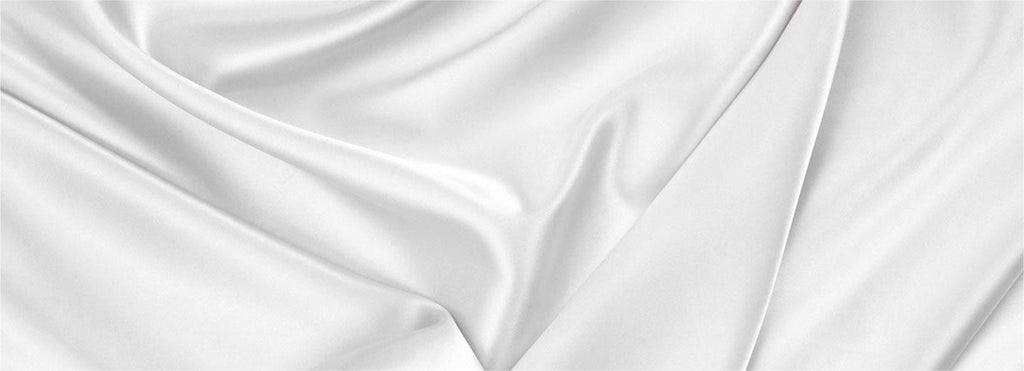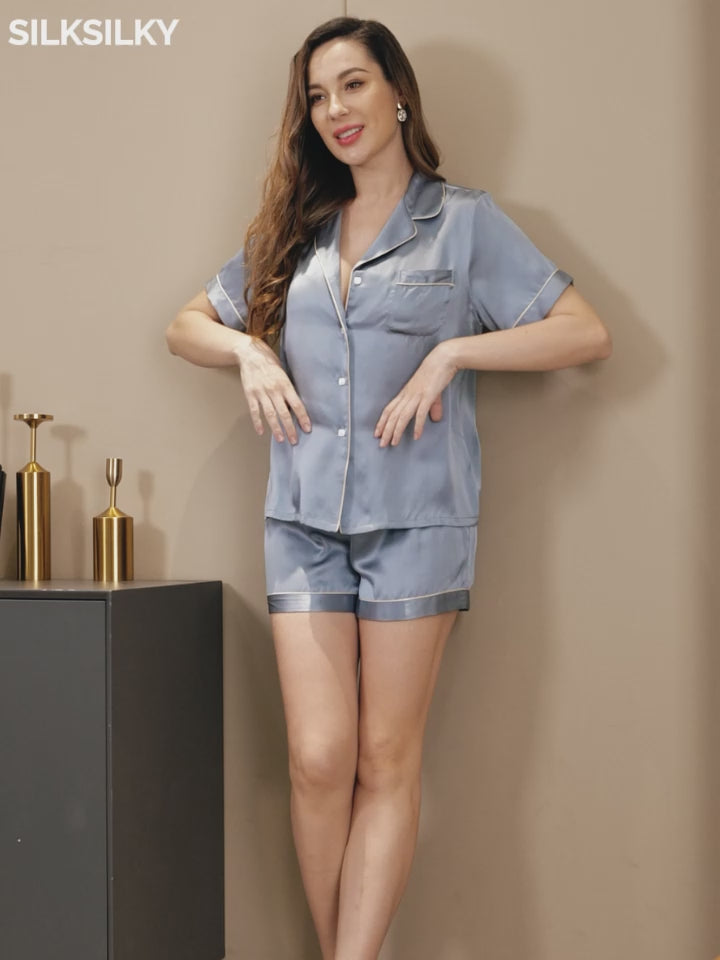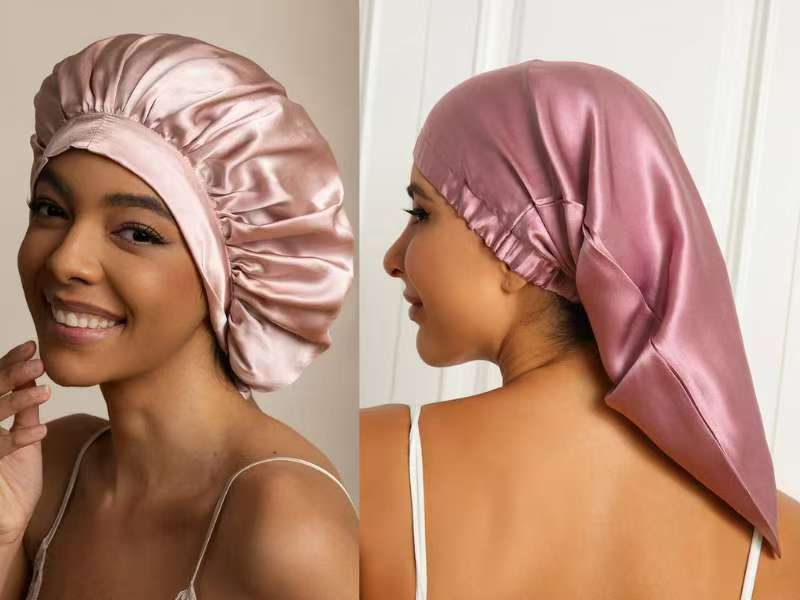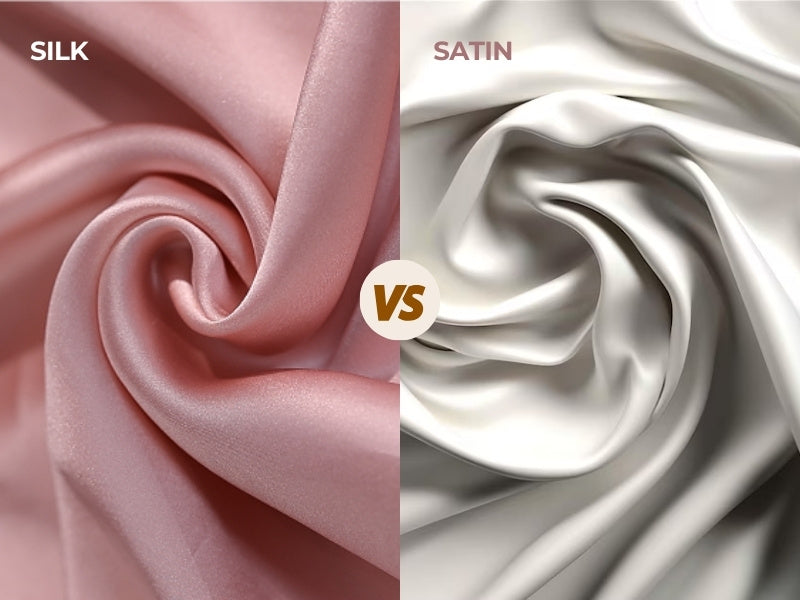A Simple Guide to Quickly Identifying Silk
Silk pajamas are not only luxurious and comfortable but also a symbol of elegance. However, with numerous artificial fabrics in the market, it can be challenging to determine whether a fabric is genuine silk or a synthetic alternative. In this comprehensive guide, we will walk you through the essential steps and techniques to quickly identify silk. Whether you're a fashion enthusiast or simply curious about distinguishing silk from imitations, this guide will equip you with the knowledge you need. So, let's delve into the world of silk and unravel the secrets of silk night wear.

1. The Feel Test:
One of the easiest ways to identify silk pajamas is through the "feel test." Genuine silk has a distinct smoothness and softness that sets it apart from synthetic fabrics. When you touch mulberry silk pajamas, it glides against your skin, offering a luxurious sensation. Artificial fabrics, on the other hand, often feel rough or slightly slippery in comparison. To conduct the feel test, run your fingers over the fabric and pay attention to its texture. Silk should feel delicate, smooth, and cool to the touch.
2. The Visual Inspection:
Examining the visual characteristics of silk pajamas can also provide valuable clues. Genuine silk has a unique luster that imparts a natural shine to the fabric. When held under light, silk reflects light in a way that synthetic materials cannot replicate. Additionally, silk often exhibits a slight iridescence, appearing to change color depending on the angle from which it is viewed. Observe the fabric carefully, looking for these visual qualities that are distinctive to silk.
3. The Fabric Inspection:
Examining the fabric closely can provide valuable clues in identifying silk pajamas. Genuine silk has a distinct weave pattern that sets it apart from synthetic fabrics. Look closely at the fabric and observe the weave structure. Silk typically has a tight, fine weave with a smooth and consistent texture. Synthetic fabrics, on the other hand, may have a more uniform and machine-made appearance with a less intricate weave pattern. Additionally, inspect the edges of the fabric. Silk often has a natural, slightly irregular edge, while synthetic materials tend to have a clean, machine-cut edge.
4. The Transparency Test:
Silk pajamas often have a subtle transparency when held up to light. Hold a section of the fabric against a light source and see if you can see through it. Genuine silk will allow some light to pass through, revealing a delicate and ethereal quality. In contrast, synthetic fabrics are generally more opaque and do not transmit as much light. Keep in mind that the level of transparency can vary depending on the weight and weave of the silk fabric, so this test may not be applicable to all silk garments

5. The Water Test:
The water test can be another useful tool in identifying silk. Fill a small container with water and submerge a corner of the fabric. Genuine silk will absorb water slowly and evenly, while synthetic materials may repel or absorb water rapidly. Silk's ability to absorb moisture ensures its breathability and comfort when worn, making it an ideal choice for pajamas.
When it comes to identifying silk pajamas, a combination of methods is often the most effective approach. By performing the feel test, visual inspection, burn test, wrinkle test, and water test, you can quickly determine whether a fabric is genuine silk or an imitation. Remember to consider these methods in conjunction with one another for a more accurate assessment. Armed with this knowledge, you'll be able to confidently choose and appreciate the luxurious beauty of silk in your pajama collection.
![[Light Blue] SilkSilky Pure Silk Notch Collar Women's Pajamas 001,](http://silksilky.com/cdn/shop/files/ab83afb9301666ee2f174a8ae72ffda4_4e9bb488-7880-40fe-9e69-f0fd823857c5.jpg?v=1764653199&width=1200)
![[Light Blue] SilkSilky Pure Silk Notch Collar Women's Pajamas 002,](http://silksilky.com/cdn/shop/files/db8dbeee5354fe3b631b963715847ffe.jpg?v=1764653202&width=1200)
![[Dark Red] SilkSilky Pure Silk Notch Collar Women's Pajamas 001,](http://silksilky.com/cdn/shop/files/599ed0811e1a5fcfa55bdc80a0279704_2643c850-a793-4475-a52b-7fef1bbd7e36.jpg?v=1762233837&width=1200)
![[Dark Red] SilkSilky Pure Silk Notch Collar Women's Pajamas 002,](http://silksilky.com/cdn/shop/files/9e022d4dd4f99aed4af8da3f58fcfd5b_efb9bafe-3d71-4283-9b81-e339ff08f352.jpg?v=1762233837&width=1200)
![[White] SilkSilky Pure Silk V Neck Nightgown 001,](http://silksilky.com/cdn/shop/files/a8ae95260a57844b1e2e00c4fcfabdcc_b922b270-af10-4e96-9493-0d877bd663db.jpg?v=1764140639&width=1200)
![[White] SilkSilky Pure Silk V Neck Nightgown 002,](http://silksilky.com/cdn/shop/files/24ac506750f8c38c51bb5b6d0ee15287.jpg?v=1764140639&width=1200)
![[Pink] SilkSilky Pure Silk Sleep Cap 001,](http://silksilky.com/cdn/shop/files/SilkSilky_Pure_Silk_Sleep_Cap_Pink_001_C-250529006.jpg?v=1762221980&width=1200)
![[Pink] SilkSilky Pure Silk Sleep Cap 002,](http://silksilky.com/cdn/shop/files/SilkSilky_Pure_Silk_Sleep_Cap_Pink_002_C-250529006.jpg?v=1762221980&width=1200)
![[Steel Blue] SilkSilky Pure Silk Notch Collar Women's Pajamas 001,](http://silksilky.com/cdn/shop/files/05b358f92fb5d252122b00d69a2fcfc5_88211a42-88c4-4448-8cb3-5f18529bfef8.jpg?v=1762237226&width=1200)








